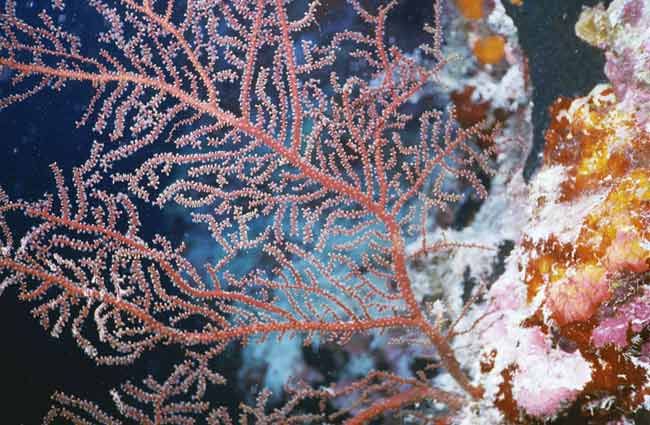
Sea Change: Corals Reveal Climate Change's Impact on Ocean

The place where the ocean's cold deep water blends with the warmer water of the upper ocean is on the move due to climate change, new research reveals.
Tropical corals in the western Pacific Ocean revealed that the depth where warm surface water and colder, deeper water meet, known as the thermocline, is getting shallower. The new study is the first physical evidence supporting what climate modelers have been predicting as the effects of global climate change on the ocean circulation below surface waters.
"Over several decades, specifically since the mid- to late-1970s, the records show that the mean depth of the thermocline has been getting shallower," said study team member Branwen Williams, who conducted the research while a Ph.D. student at the Ohio State University in Columbus. Williams is now a postdoctoral researcher at the University of Toronto in Ontario.
The thermocline's upward shift may be due in part to a shift in a long-lived pattern of climate variability similar to the El Niño phenomenon, called the Pacific Decadal Oscillation (PDO). The thermocline shift in the 1970s coincides with a shift in the PDO from a negative phase to a positive phase, said Andrea Grottoli, a study team member also from Ohio State.
During a positive, or warm, phase, the surface waters of the west Pacific become cool and part of the eastern ocean warms.
"We think the thermocline rose when the PDO shifted," Grottoli said, "that it was a cumulative effect of both the natural variability of the PDO plus the warming global temperatures."
What happens deeper in the waters is often unknown because satellite data and physical measurements are mainly restricted to the ocean's surface.
Sign up for the Live Science daily newsletter now
Get the world’s most fascinating discoveries delivered straight to your inbox.
To study the underwater mixing, Williams and colleagues turned to a form of soft, flexible coral, the Gorgonians, growing on a reef off the island nation of Palau in the western Pacific Ocean as a proxy (or stand-in) of ocean water temperature.
"These corals 'sway' with the current underwater like trees in the wind," Grottoli said. “Since they aren't restricted to shallow and warmer surface waters like other tropical corals, they provide an opportunity to reconstruct a picture of subsurface ocean circulation in aregion.”
The soft corals were used as a substitute for determining how the thermocline rose and fell over time. Slices in the coral reveal growth rings, much like tree rings. These rings contain different levels of nitrogen isotopes — the warmer water near the surface has a higher ratio of nitrogen-15 to nitrogen-14 isotopes than cold, deep water — which allowed scientists todraw a picture of how the thermocline has moved. (Isotopes are atoms of the same chemical element that have different numbers of neutrons in their nucleus.)
The researchers did a similar analysis of the ratio of two carbon isotopes in the coral samples as well. Both types of isotopes changed inthe coral over time in a way that suggests the shift in the thermocline toward the surface.
"I think it's fair to say that the carbon isotope record supports this interpretation," Grottoli said. "It's another piece of evidence backing our conclusions."
The researchers were also looking at how the coral record meshed with the PDO. While El Niño changes over a period of years, the PDO changes over decades.
"Climate modelers looking at how the Pacific might respond to global warming have predicted that the atmospheric patterns in the tropical Pacific would weaken, and if that happened, you would expect the thermocline to get shallower in the western tropical Pacific," Williams said, "Our data are some of the first proxy data to support what the modelers have been predicting."
The researchers want to repeat their study using coral samples from other locations, moving eastward across the Pacific, to test their findings that the thermocline shift wasn't a regional phenomenon, that it is occurring all across the ocean basin, Williams said.
The study will be detailed in an upcoming edition of the journal Geophysical Research Letters.
- Image Gallery: Creatures from the Census of Marine Life
- Remains of Huge, Ancient Coral Reef Discovered
- Image Gallery: Colorful Coral
This article was provided by OurAmazingPlanet, a sister site to LiveScience.












